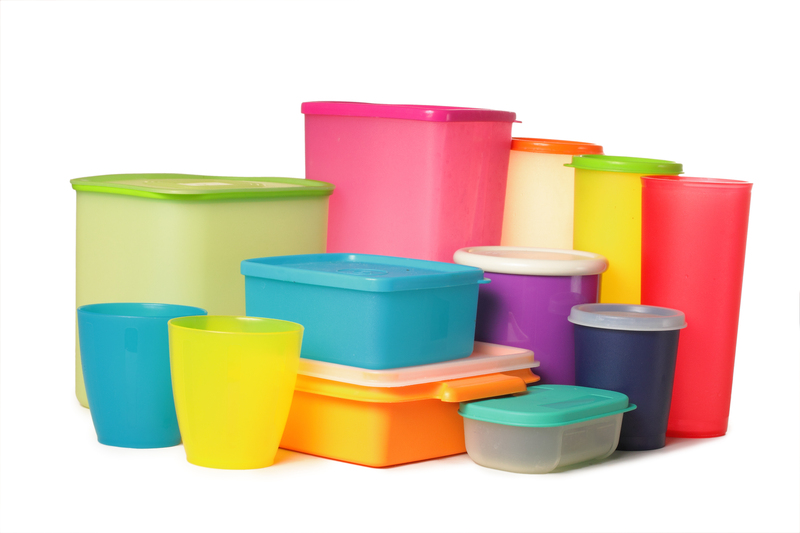Eco-Friendly Solutions for Pots and Pans Disposal and Recycling
Properly disposing of or recycling old pots and pans is a crucial yet often overlooked step towards building a more sustainable home. If you're concerned about eco-friendly pots and pans disposal and recycling, this comprehensive guide offers actionable strategies and eco-conscious solutions for transforming your kitchen cleanup into a green endeavor. Whether your cookware is made from stainless steel, aluminum, cast iron, nonstick, or ceramic, you'll find helpful tips to keep these items out of the landfill and help protect our planet.
Why Sustainable Cookware Disposal Matters
Each year, millions of cookware pieces end up in landfills, where materials such as metals, ceramics, plastics, and nonstick coatings can take hundreds of years to break down, leaching harmful chemicals into the environment. Adopting green disposal and recycling options for pots and pans significantly reduces environmental impact, conserves natural resources, and supports the circular economy.
- Reduces landfill waste and toxic leaching
- Repurposes valuable materials like aluminum and steel
- Encourages manufacturers to use recycled content
- Promotes awareness and responsibility in communities

Common Materials: A Quick Overview
Understanding what your cookware is made from is the first step in sustainable pans and pots disposal. Here's a breakdown of typical materials:
- Stainless Steel: Highly recyclable with scrap metal programs
- Cast Iron: Long lifespan, easy to refurbish or recycle as scrap metal
- Aluminum: Lightweight, valuable for recycling
- Nonstick/Teflon-Coated: Challenging to recycle, may contain chemicals
- Ceramic: Not always recyclable curbside; creative reuse is key
If your pots and pans are mixed materials (e.g., steel base with plastic handles), some preparation--like removing handles or silicone inserts--may be needed before recycling.
Eco-Conscious Disposal Methods
1. Donate Usable Cookware
_Donating is the most eco-friendly way to part with gently-used kitchenware._ Secondhand cookware can be a treasure for local families, students, or charities.
- Check with thrift stores such as Goodwill or Salvation Army
- Donate to community cooking programs
- Ask at shelters or food banks if they accept cookware
- List items for free on platforms like Freecycle, Facebook Marketplace, or Craigslist
Tip: Clean and inspect pots and pans before donating to ensure they are in serviceable condition.
2. Creative Upcycling and Repurposing
Instead of trashing old cookware, give it new life through upcycling and creative reuse. This innovative approach to eco-friendly pots and pans disposal is both environmentally responsible and inspiring.
- Planters: Fill an old saucepan or skillet with soil--ideal for herbs or succulents
- Decor: Use large pans as wall art or memo boards with chalkboard paint
- Organizers: Store tools, craft supplies, or seeds
- Pet Dishes: Clean pans make sturdy pet food or water bowls
- Wind Chimes & Garden Art: Attach lids and handles for whimsical garden features
3. Metal Recycling: Scrap Yards and Curbside Options
Many metal cookware items are ideal candidates for metal recycling. Scrap yards and some municipal recycling centers will accept pots and pans, especially if they are free from non-metal parts.
- Stainless steel, cast iron, and aluminum cookware can be dropped off at local scrap metal recycling centers
- Remove plastic or wooden handles and separate mixed materials for faster processing
- Your city or county public works department can often guide you on where to take scrap metal
_Did you know? Recycled metals use far less energy and resources than mining virgin ore._
4. Specialized Nonstick and Teflon Pan Disposal
Nonstick pans covered with PTFE/Teflon or ceramic coatings require special treatment. Most facilities do not accept them, since the coating complicates recycling and may pose health risks if incinerated.
- Contact the manufacturer--some run take-back or recycling programs
- Ask scrap yards if they can accept pans (some will, if coatings are removed)
- Do not burn or heat in an open fire, as toxic fumes can be released
- If no recycling option is available, see if you can upcycle
_Tip: When purchasing new nonstick cookware, ask the manufacturer about their end-of-life recycling policies._
5. Ceramic and Glass Cookware: Difficult but Not Impossible
While ceramic and glass cookware aren't typically accepted in curbside recycling, there are still sustainable pans and pots disposal avenues.
- Use large ceramic dishes as garden stepping stones
- Shatter and add to drainage at the bottom of planters
- Check for local art studios or schools that can use pieces for mosaics
- Some landfill programs have specialized bins for ceramics--ask your waste management provider
Pots and Pans Recycling Programs by Brand
Major Brands and Their Take-Back Initiatives
Some cookware manufacturers have recognized the demand for eco-friendly pots and pans recycling and launched take-back programs. Here are a few:
- Zwilling: "Zwilling Culinary World Recycle" program recycles used pans and cutlery at select stores.
- TerraCycle: Offers specific cookware recycling programs in partnership with certain brands.
- GreenPan: Accepts returns of worn-out nonstick pans for responsible recycling.
- Farberware: Customer Service can advise about recycling options.
Check directly with your brand's website for up-to-date recycling programs or mail-back options.
How to Prepare Cookware for Environmentally-Friendly Disposal
For smooth recycling, a bit of advance effort makes all the difference. Here's how to get your cookware ready for sustainable pans and pots disposal:
- Clean thoroughly: Remove oil, food bits, or residues
- Disassemble: Take off plastic/wood handles, rubber grips, lid knobs, or gaskets
- Sort: Separate by material (steel, cast iron, aluminum, nonstick, glass, ceramic)
- Label: If required by your recycling center
- Contact your facility: Ask about specific requirements for drop-off or collection
Frequently Asked Questions on Pots and Pans Disposal
Can you put old pots and pans in the recycling bin?
Usually, curbside recycling programs do not accept cookware due to size, weight, or material combos. However, scrap metal recyclers, municipal recycling drop-off locations, or specialty programs often do. Always check local guidelines.
Are nonstick pans recyclable?
Conventional nonstick pans are difficult to recycle because of their coating. A few specialty recyclers will accept them, but for most, reuse or upcycling is the best option.
How should I dispose of broken or unusable cookware?
If donation isn't possible, pursue metal scrap recycling or find creative ways to repurpose the item around your home or garden. As a last resort, ensure you separate recyclable and landfill-bound components where possible.

Tips for Choosing Eco-Friendly Cookware in the Future
- Prefer cookware made from recyclable materials: Stainless steel, cast iron, and aluminum are best
- Avoid synthetic coatings: Seek brands with ceramic or natural finishes and inquire about take-back programs
- Look for durability: Invest in long-lasting cookware to reduce disposal frequency
- Research manufacturers' recycling policies: Support brands that offer recycling or take-back services
Choosing mindfully today means eco-friendly pots and pans disposal tomorrow is much simpler.
Conclusion: Small Steps, Big Impact
Adopting green cookware disposal and recycling practices is a straightforward but powerful way to minimize your environmental footprint. By donating, upcycling, and choosing the right recycling paths for your old pans and pots, you contribute to cleaner landfills, responsible resource management, and a healthier planet. Spread the word in your community and shop mindfully to keep sustainability at the heart of your kitchen.
Every pan and pot counts. Make your next disposal--or next purchase--a green one!
